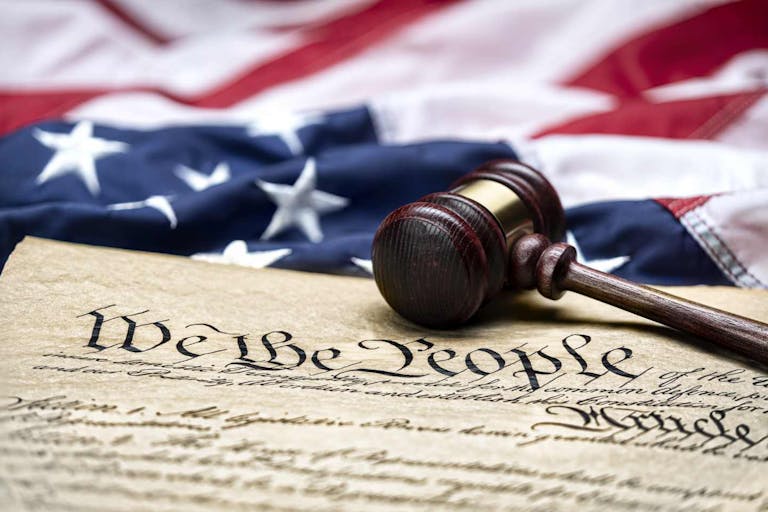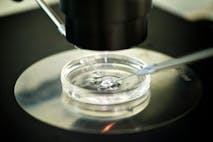
The federal abortion battle testing the pro-life movement
Mark Wiltz
·
Former abortion worker: Teen came in for three abortions, parents never knew
Brenda Pratt-Shaffer spent three days working at a late-term abortion facility before she became so troubled by what she saw that she quit. She recently wrote a book about her experiences called What the Nurse Saw: Eyewitness to Abortion.
On Pratt–Shaffer’s first day in the abortion facility, she cared for a teenage girl who was there having an abortion without her parents’ knowledge. Pratt–Shafer wrote:
One of the things that really bothered me that day was a fifteen-year-old girl having her third abortion. Her parents did not even know that she was there. She was laughing the whole time she was in the clinic. I wondered if this was a nervous laugh or if she truly just did not care….I just kept thinking about my fifteen-year-old daughter that I had to sign for to have her ears pierced. But here was a fifteen-year-old having such a horrific procedure for the third time that her parents didn’t even know about.(1)
This young woman was in a self-destructive spiral. As a teenager having an abortion, she was already at higher risk of suicide than an adult having an abortion. One study found that a post–abortive teenager is 10 times more likely to commit suicide than a teenager who has never had an abortion.
Her physical health was endangered as well. If this teen were to suffer complications after an abortion, she might hide them from her parents in an effort to keep the abortion a secret. Her parents will not know to be vigilant about their daughter’s health. They won’t know to look out for symptoms of abortion complications in their child. They may not be aware of a dangerous complication like an infection before it’s too late.
This girl’s parents lost three grandchildren to abortion and were never given a chance to try and help their daughter.
In many states there are no parental notification laws, meaning that teenagers are free to schedule their abortions without their parents ever knowing. Even in states where parental notification or consent laws exist, there are judicial bypass clauses that allow teens to evade these laws. Often, Planned Parenthood and other abortion facilities help walk teenagers through the process of judicial bypass.
Article continues below
Dear Reader,
Have you ever wanted to share the miracle of human development with little ones? Live Action is proud to present the "Baby Olivia" board book, which presents the content of Live Action's "Baby Olivia" fetal development video in a fun, new format. It's perfect for helping little minds understand the complex and beautiful process of human development in the womb.
Receive our brand new Baby Olivia board book when you give a one-time gift of $30 or more (or begin a new monthly gift of $15 or more), and your gift will be DOUBLED to fuel Live Action’s life-saving content.
According to Margo, who worked at a different late-term abortion facility:
Where I worked we were a privately owned late term abortion clinic up to 20 weeks, and Michigan did pass a 24 hour consent law, and we did have parental overrides, judicial overrides that the counselors would help the minors obtain. And some of those things were pretty sketchy…It was more of a goal to keep them [parents] out as much as possible, because we did notice that outcomes would change when there was parental involvement. And so there was a whole system in place to help the kids get a judicial bypass, which basically was a rubber stamp, just go before the judge and say, “I’m afraid of what my parents will do to me if they find out that I am pregnant.” And the judge would ask, “Do you feel like you would be in danger?” “Yes.” “Ok.” And it’s just that sort of thing.
The court bypass option available to minors has always been a loophole that allows teens to evade parental consent laws. The teen must go before a judge and convince him either that she is mature enough to make the abortion decision, or that the abortion is in her best interest. On either of these grounds, the judge can permit the abortion without parental consent. The book Adolescent Abortion: Psychological and Legal Issues discusses one of the first parental consent laws that went into effect and how little impact it had:
As a matter of practice, proceedings have turned out to be pro forma rubberstamps of minors’ decisions. Most minors are found to be mature, and, perhaps unsurprisingly, abortions are almost always found to be in the best interests of immature minors. In Massachusetts between April 1981 [when the parental consent judicial bypass law went into effect] and February 1983, about 1300 minors sought abortions through the judicial bypass procedure. In about 90% of cases, minors were found to be mature. In the remaining cases, all but five petitioners’ request for abortions were approved, according to a best interests standard. In three of those cases the trial court’s decision was overturned on appeal. In one case the judge invited the minor to seek approval from another judge, who granted the petition. In the remaining case the minor decided to go to a neighboring state for the abortion. (2)
The law, therefore, did not prevent a single teenager from having abortions without their parent’s knowledge. Better options need to be pursued to make sure vulnerable teens have the guidance of their parents when making life and death decisions.
1.Brenda Pratt-Shafer, David Shafer What the Nurse Saw: Eyewitness to Abortion (Mustang, Oklahoma: Tate Publishing & Enterprise, LLC, 2016) 27
2. Gary B. Melton, ed Adolescent Abortion: Psychological and Legal Issues (Lincoln, Nebraska: University of Nebraska Press, 1986) 27
Live Action News is pro-life news and commentary from a pro-life perspective.
Contact editor@liveaction.org for questions, corrections, or if you are seeking permission to reprint any Live Action News content.
Guest Articles: To submit a guest article to Live Action News, email editor@liveaction.org with an attached Word document of 800-1000 words. Please also attach any photos relevant to your submission if applicable. If your submission is accepted for publication, you will be notified within three weeks. Guest articles are not compensated (see our Open License Agreement). Thank you for your interest in Live Action News!

Mark Wiltz
·
Issues
Cassy Cooke
·
Issues
Sheena Rodriguez
·
Issues
Cassy Cooke
·
Issues
Angeline Tan
·
Issues
Angeline Tan
·
Guest Column
Sarah Terzo
·
Abortion Pill
Sarah Terzo
·
Guest Column
Sarah Terzo
·
Guest Column
Sarah Terzo
·
Guest Column
Sarah Terzo
·